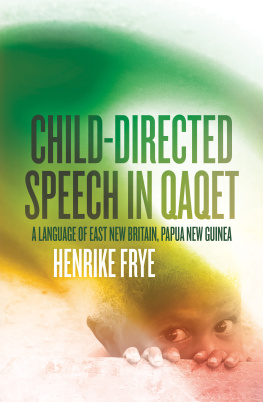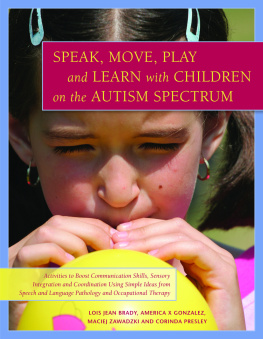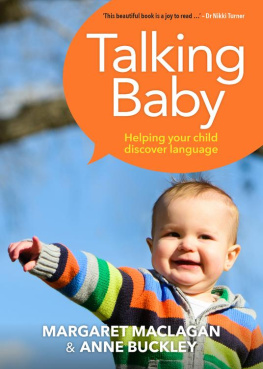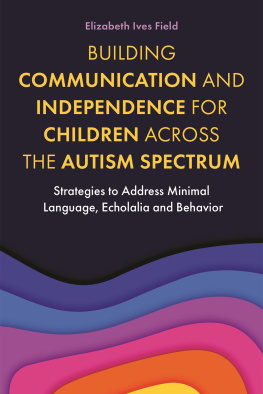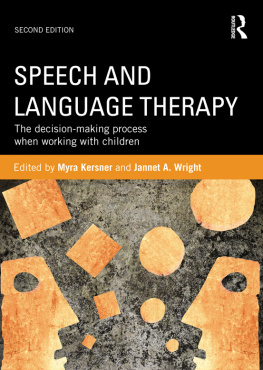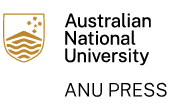This title is published under a Creative Commons Attribution-NonCommercial-NoDerivatives 4.0 International (CC BY-NC-ND 4.0) licence.
The full licence terms are available at creativecommons.org/licenses/by-nc-nd/4.0/legalcode
Cover design and layout by ANU Press. Cover photograph Child in Kamanakam by Carmen Dawuda.
This book is published under the aegis of the Asia-Pacific Linguistics Editorial Board of ANU Press.
Acknowledgements
This work was not produced in empty space, but it was made possible by the immense support I received from many different persons. I want to thank all those people who cared for me and my research and shared their time, ideas and resources with me. You taught me that neither distance nor time pose limits to community and open-mindedness.
First, I am deeply grateful to the communities of Raunsepna, Lamarain and Kamanakam. Thanks for sharing your time, thoughts, stories, your houses, food and buai.
Numerous individuals contributed to this work, be it as participants in audio and video recordings, culture experts, as transcribers or as translators. For their efforts, their lessons, their care, their broad-mindedness and their dedication, I would like to thank:
Afra Kularek, Afra Savangit, Alois Balar, Alois Kemsarlem, Andrew Kaltumen, Angelika Kurlik, Anna Iarilmi, Anna Kaqetki, Anna Mitnik, Anna Savandi, Batlius Kabainga, Ben Karliun, Bernard Kulap, Betty Dangas, Bibiana Mali, Blasius Benga, Blasius Gesaqa, Boniface Lan, Bonifaz Issa, Caroline Unsim, Caspar Mestaqaet, Caspar Panavu, Cecilia Irlus, Christine Maqi, Christopher Kereku, Christopher Mitparlingi, Christopher Philemon, Clement Muaqanem, Clementia Guailas, Damien Kereku, Dorothy Naremitki, Erica Murumgi, Felix Danly, Francis Kalang, Frances Ngeligi, Francisca Ngenara, Francisca Ngusurlki, Gloria Kuanas, Henry Lingisaqa, Jacob Telile, Joana Samisin, Joana Standi, John Landi, Josephine Rami, Lona Sinirang, Lucy Nguingi, Lucy Rluses, Lucy Sutit, Lucy Tena, Lucy Topona, Marcella Tangil, Margret Mitil, Maria Kademgi, Maria Karakmet, Maria Salap, Maria Savarin, Martha Iaken, Martina Lurlki, Mathias Batnaqa, Michael Mestanat, Michael Vaka, Michael Wasupka, Monica Ilas (from Lasrlem), Monica Ilas (from Lualait), Monica Sandi, Monica Sunun, Patrick Lemigel, Paul Alin, Paula Nuvaqat, Peter Saminga, Philipp Ramit, Raphael Luangi, Raphael Ngunaqa, Raphael Nuavet, Rebecca Savirian, Rita Salap, Robert Vaka, Roberta Nakai, Rose Ngusurlki, Rose Boni, Sara Puatbum, Scolastica Karikmetki, Selina Qiuaik, Susan Sakalkal, Theresia Tamian, Theresia Kurukpet, Toni Alin, Utilia Avitki, and Vincent Depguasdarik
For their warm hospitality and generosity, I would like to thank Ludwina and James Tapele and their family. I gratefully remember the support of their deceased son Junior Danang.
I would like to thank the FMI (Filia Maria Immaculata) Sisters, especially Sr Wilhelmina Sundu for allowing me to stay in the Raunsepna-convent, and my house mates Sr Goretty Kuikui and Sr Roselyne Tarur for their care, hospitality, curiosity and humour.
For their hospitality and generosity, I would like to thank Joana Pascan and her family; Dorothy and Patrick Alvin; Emma and Thomas; Rose; Sheila and Jefferson Marampau.
I acknowledge the Volkswagen-Stiftung making this research possible through generous funding, and the a.r.t.e.s. Graduate School Cologne and ANU Press for funding support.
For this work, I was so lucky to become part of the Department of Linguistics at the University of Cologne. Numerous people there offered their support, guidance and friendship, for which I am incredibly grateful.
Especially, I want express my deepest gratitude to the worlds best supervisor, my mentor Birgit Hellwig, for having me on the bridge, my second supervisor Nikolaus Himmelmann for his valuable comments, and for telling me to stop splitting hairs (or intonation units), and Elena Lieven from the University of Manchester for her willingness to engage with my work, the long travel she took on to do so and her insightful feedback.
I am deeply grateful to Carmen Dawuda for her tremendous support, be it on the other side of the corridor, office table or world; Steffen Reetz for sharing this journey with me; Lena Wolberg for her wizardry in overcoming bureaucratic obstacles; Sonja Eisenbeiss for her expertise and passion, and for her generosity in sharing these with me; Christoph Bracks for taking the time to truly engage with my ideas (and for tolerating my reactions to his comments); Aung Si for believing in me and for literally hundreds of commas; Ivan Kapitonov for providing stylistic advice; Gabriele Schwiertz for sharing her knowledge about phonetic analysis; Felix Rau and Volker Unterladstetter for sharing their LaTeX-skills; Sonja Riesberg for sharing her experience and insights; and Melanie Schippling, Lena Pointner and Miyuki Hennings for the numerous times they supported my linguistic analyses with their Qaqet skills and experience.
I want to thank Christian Lehmann for the dedicated training I received, and for prompting my mood of determination.
For the kind support I received in the publication of this work I want to thank Bethwyn Evans, Bruno Olsson and Angela Terrill.
I would like to thank my friends Agnes, Julia, Julian, Oliver and Susi for their vivid interest, their brilliant thoughts and the countless occasions they encouraged me.
I am deeply grateful to my parents for their unconditional love, trust and support.
Danke fr Wurzeln und Flgel.
Finally, I want to thank my husband Patrick for his company, his patience, and his support and care.
Amatlungena!
Part I: Setting the scene
Introduction
1.1 Overview
Studying the linguistic environment of young learners is an indispensable key to the understanding of child language acquisition. The language children hear is the most important source of information they have to acquire a linguistic system. They have to connect form, meaning and diverse levels of interaction and identify the relevant cues that guide them in this process. The linguistic matter that surrounds them is one of the various forces spurring this development.
The study of child-directed speech (CDS) furthermore offers valuable insights into adult language (e.g. adult speakers metalinguistic knowledge, as reflected in corrections of young children; Hellwig & Jung 2020) and processes of language shift (e.g. the exact processes involved in the interruption of intergenerational transfer of a language; Grenoble & Whaley 2006). We must understand processes of language shift to deal successfully with the rising loss of languages around the world. While small, marginalised language communities often find themselves confronted with the loss of their identity, linguists see the empirical base of their theories disappear (Pye 2020). The goals of these two groups do not always overlap but both could mutually benefit from responsibly conducted language documentation that includes child language and child-directed language. Currently, there are acquisition studies for about 12 per cent of the worlds languages, and even this sample largely consists of Indo-European languages (Stoll 2015: 114). These languages not only have comparatively unusual linguistic features (Stoll 2015), but they are also mostly spoken in so-called WEIRD (Western, educated, industrialised, rich, democratic), that is, hegemonic societies. These have been found to differ substantially from the majority of communities around the world on various dimensions of social description (Henrich et al. 2010). Thus, current theories of language development are based on a sample biased towards a rather atypical part of the global population:

